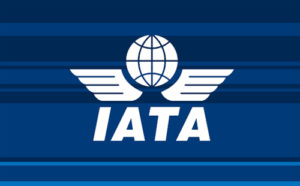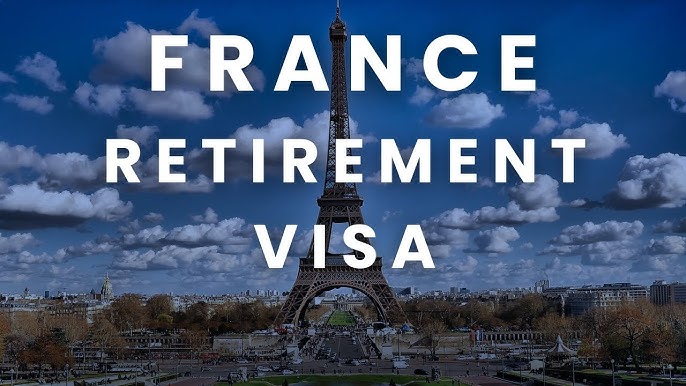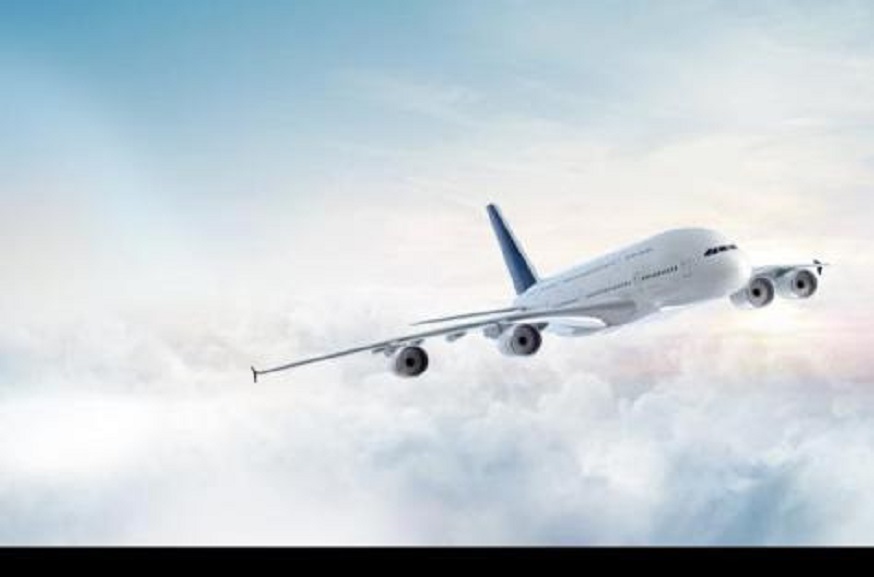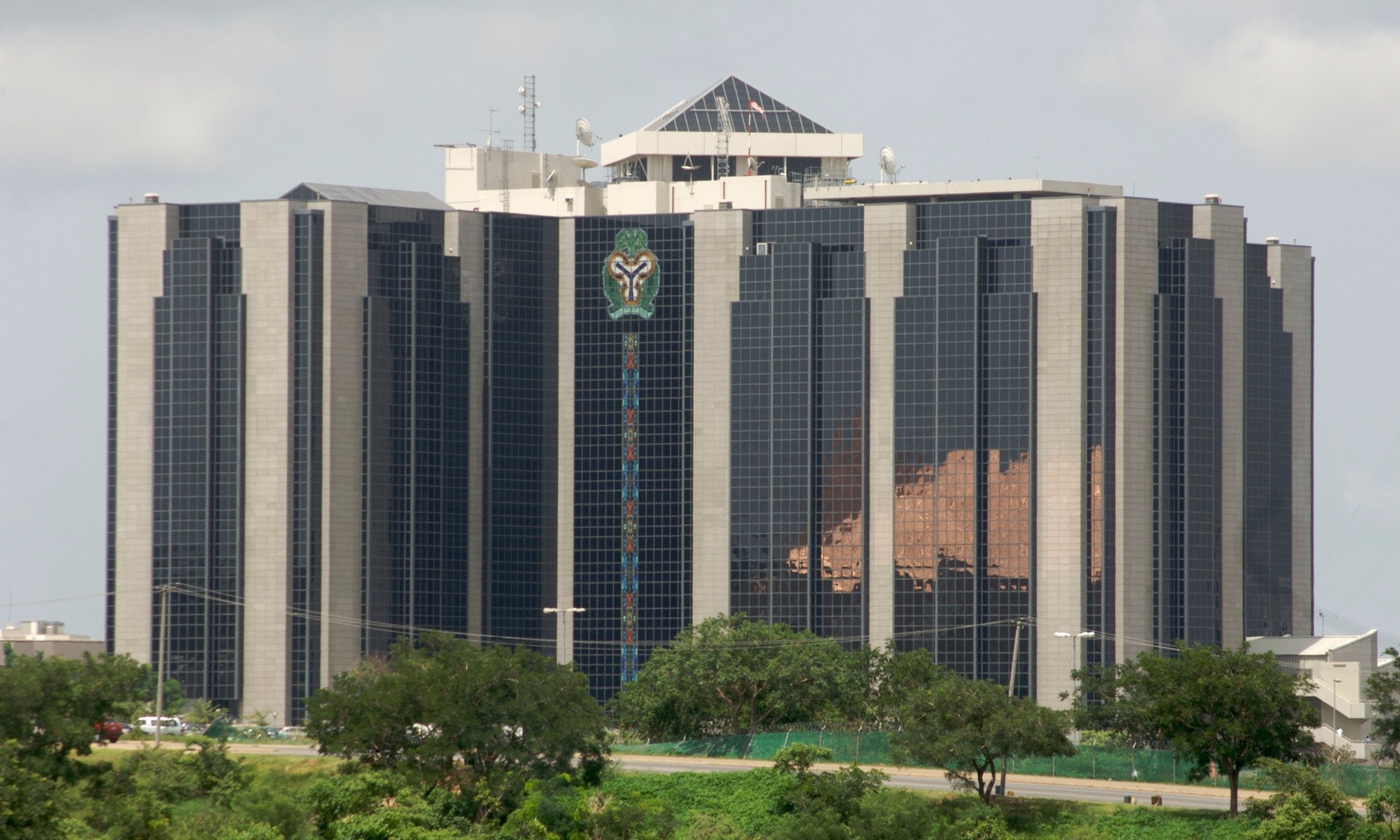Travel/Tourism
Global Airline Profits To Hit $29.8m in 2017—IATA


By Modupe Gbadeyanka
The International Air Transport Association (IATA) has declared that it expects the global airline industry to make a net profit in 2017 of $29.8 billion.
On forecast total revenues of $736 billion, that represents a 4.1 percent net profit margin.
This will be the third consecutive year (and the third year in the industry’s history) in which airlines will make a return on invested capital (7.9%) which is above the weighted average cost of capital (6.9%).
IATA revised slightly downward its outlook for 2016 airline industry profitability to $35.6 billion (from the June projection of $39.4 billion) owing to slower global GDP growth and rising costs. This will still be the highest absolute profit generated by the airline industry and the highest net profit margin (5.1%).
“Airlines continue to deliver strong results. This year we expect a record net profit of $35.6 billion. Even though conditions in 2017 will be more difficult with rising oil prices, we see the industry earning $29.8 billion. That’s a very soft landing and safely in profitable territory. These three years are the best performance in the industry’s history—irrespective of the many uncertainties we face. Indeed, risks are abundant— political, economic and security among them. And controlling costs is still a constant battle in our hyper-competitive industry,” said Alexandre de Juniac, IATA’s Director General and CEO.
“We need to put this into perspective. Record profits for airlines means earning more than our cost of capital. For most other businesses that would be considered a normal level of return to investors. But three years of sustainable profits is a first for the airline industry. And after many years of hard work in restructuring and re-engineering the business the industry is also more resilient. We should also recognize that profits are not evenly spread with the strongest performance concentrated in North America,” said de Juniac.
2017
While airline industry profits are expected to have reached a cyclical peak in 2016 of $35.6 billion, a soft landing in profitable territory is expected in 2017 with a net profit of $29.8 billion. 2017 is expected to be the eighth year in a row of aggregate airline profitability, illustrating the resilience to shocks that have been built into the industry structure. On average, airlines will retain $7.54 for every passenger carried.
Expected higher oil prices will have the biggest impact on the outlook for 2017. In 2016 oil prices averaged $44.6/barrel (Brent) and this is forecast to increase to $55.0 in 2017. This will push jet fuel prices from $52.1/barrel (2016) to $64.9/barrel (2017). Fuel is expected to account for 18.7% of the industry’s cost structure in 2017, which is significantly below the recent peak of 33.2% in 2012-2013.
The demand stimulus from lower oil prices will taper off in 2017, slowing traffic growth to 5.1% (from 5.9% in 2016). Industry capacity expansion is also expected to slow to 5.6% (down from 6.2% in 2016). Capacity growth will still outstrip the increase in demand, thus lowering the global passenger load factor to 79.8% (from 80.2% in 2016).
The negative impact of a lower load factor is expected to be offset somewhat by a strengthening of global economic growth. World GDP is projected to expand by 2.5% in 2017 (up from 2.2% in 2016). Along with structural changes in the industry, this is expected to help stabilize yields for both the cargo and passenger businesses. This is a welcome development as yields (calculated in dollar terms) have fallen each year since 2012.
There is some optimism over the prospects for the cargo business in 2017. The break in falling yields and a moderate uptick in demand (3.5%) will see cargo industry volumes reach a record high of 55.7 million tonnes (up from 53.9 million tonnes in 2016). Industry revenues are expected to rise slightly to $49.4 billion (still well below the $60 billion level of annual revenues experienced in 2010-2014). Trading conditions remain challenging.
“Connectivity continues to set new records. We expect nearly 4 billion travelers and 55.7 million tonnes of cargo in the coming year. And almost 1% of global GDP is spent on air transport—some $769 billion. Air transport has made the world more accessible than ever and it is a critical enabler of the global economy,” said de Juniac.
“Governments, however, do not make aviation’s work easy. The global tax bill has ballooned to $123 billion. Over 60% of countries put visa barriers in the way of travel. And the total number of ticket taxes exceeds 230. Billions of dollars are wasted in direct costs and lost productivity as a result of inefficient infrastructure. These are only some of the hurdles which confront airlines. Our aim is to work in partnership to help governments better understand and fully maximize the social and economic benefits of efficient global air links,” said de Juniac.
2017 Regional Analysis
North American carriers: The strongest financial performance is being delivered by airlines in North America. Net post-tax profits will be the highest at $18.1 billion next year, although down slightly from the $20.3 billion expected in 2016. The net margin for the region’s carriers is also expected to be the strongest at 8.5% with an average profit of $19.58/passenger. In 2017 capacity offered by the region’s carriers is expected to grow by 2.6%, slightly outpacing expected demand growth of 2.5%. Recent consolidation continues to underpin the region’s strong profitability, even as the region faces upwards cost pressures which include the price of fuel.
European carriers: Airlines based in Europe are expected to post an aggregate net profit of $5.6 billion in 2017 which is below the $7.5 billion for 2016. Nonetheless, carriers there are forecast to generate a 2.9% net profit margin and a per passenger profit of $5.65. There remains a significant gap between the performance of the region’s carriers and the performance of North American ones. Capacity in 2017 is expected to grow by 4.3%, ahead of demand growth which is forecast at 4.0%. The region is subject to intense competition and hampered by high costs, onerous regulation and high taxes. And terrorist threats remain a real risk, even if confidence is starting to return after the tragic incidents in recent times.
Asia-Pacific carriers: Airlines in the Asia-Pacific region are expected to generate a net profit of $6.3 billion in 2017 (down from $7.3 billion in 2016) for a net margin of 2.9%. On a per passenger basis average profits are anticipated to be $4.44. Capacity offered by the region’s carriers is forecast to grow by 7.6%, ahead of a forecast growth in demand of 7.0%. Improved cargo performance is expected to offset rising fuel prices for many of the region’s airlines. The expansion of new model airlines and progressive liberalization in the region is intensifying already strong competition. In addition profitability varies widely across the region.
Middle Eastern carriers: Middle Eastern airlines are forecast to generate a net profit of $0.3 billion for a net margin of 0.5% and an average profit per passenger of $1.56. This is below the $900 million profit expected in 2016. Average yields for the region’s carriers are low but unit costs are even lower, partly driven by the strong capacity expansion, forecast at 10.1% this year, ahead of expected demand growth of 9.0%. Threats are emerging to the success story of the Gulf carriers, including increases in airport charges across the Gulf States and growing air traffic management delays.
Latin American carriers: Latin American airlines are expected to post a net profit of $200 million, which is slightly lower than the $300 million forecast for 2016. Profit per passenger is expected to be $0.76 with a net profit margin of 0.7%. Capacity offered by the region’s carriers is forecast to grow by 4.8% which is ahead of expected demand growth of 4.0%. Despite some signs of improvement in the region’s currencies and economic prospects, operating conditions remain challenging, with infrastructure deficiencies, high taxes, and a growing regulatory burden across the continent. Venezuela continues to block the repatriation of some $3.8 billion of industry funds in contravention of international obligations.
African carriers: Carriers in Africa are expected to deliver the weakest financial performance with a net loss of $800 million (broadly unchanged from 2016). For each passenger flown this amounts to an average loss of $9.97. Capacity in 2017 is expected to grow by 4.7%, ahead of 4.5% demand growth. The region’s weak performance is being driven by regional conflict and the impact of low commodity prices.
2016
2016 will be a record year for industry profitability. The expected net profit of $35.6 billion is slightly ahead of the $35.3 billion recorded in 2015, as is the 5.1% net profit margin (slightly ahead of the 4.9% recorded for 2015).
The modest revision from previous expectations largely is owing to two factors: slower global GDP growth: 2.2%, which was below mid-year expectations of 2.3% growth and non-fuel unit costs increased by 2.0% in 2016.
The Business of Freedom
“Air transport is the business of freedom. The safe and efficient global movement of goods and people is a positive force in our world. Aviation’s success betters peoples’ lives by creating economic opportunity and supporting global understanding. We must stand firm in the face of any rhetoric that would put limits on aviation’s future success,” said de Juniac.
Some key indicators of the strength of global connectivity include:
The average return airfare in 2017 is expected to be $351 (2015 dollars), which is 63% below 1995 levels.
Average air freight rates in 2017 are expected to be $1.48/kg (2015 dollars) which is a 68% fall on 1995 levels.
The number of unique city pairs served by aviation grew to 18,429 in 2016, a 92% increase on 1995.
The value of trade carried by air transport in 2017 is expected to be $5.7 trillion, a 4.9% increase on 2015. Air cargo accounts for around 35% of the total value of goods traded globally.
The global spend on tourism enabled by air transport is expected to grow by 5.1% in 2017 to $681 billion.
Supply chain jobs supported by aviation are expected to grow by 3.4% in 2017 to some 69.7 million worldwide.
Airlines are expected to take delivery of some 1,700 new aircraft in 2017, around half of which will replace older and less fuel-efficient aircraft. This will expand the global commercial fleet by 3.6% to 28,700.
Airlines are expected to operate 38.4 million flights in 2017, up 4.9%.
Travel/Tourism
FG to Introduce Biometric Single Travel Emergency Passport 2026

By Adedapo Adesanya
The federal government has announced plans to introduce the new biometric emergency travel document, the Single Travel Emergency Passport (STEP), by 2026 as part of reforms aimed at modernising Nigeria’s immigration processes and strengthening border security.
Initially revealed in November, the Comptroller General of the Nigeria Immigration Service (NIS), Mrs Kemi Nandap, speaking on Monday in Abuja during the decoration of 46 newly promoted Assistant Comptrollers of Immigration (ACIs) to the rank of Comptrollers of Immigration, said the proposed STEP would replace the current Single Travel Emergency Certificate (STEC) and is designed to enhance efficiency, security, and global acceptability of Nigeria’s emergency travel documentation.
She explained that the new emergency passport would be biometric-based and deployed through alternative, technology-driven platforms to ensure seamless service delivery.
“I’m looking forward to embracing 2026, which will also be part of all the reforms we’re doing to ensure that we optimise our services, in terms of visas, passport production lines and our contactless solutions,” she said.
The NIS boss noted that the STEP is one of several technology-driven innovations being rolled out by the Service to improve operational efficiency and meet its constitutional mandate.
She also highlighted the recent introduction of the ECOWAS National Biometric Identity Card (ENBIC), describing it as a critical step towards seamless regional integration and secure cross-border movement within West Africa.
“We want to ensure that our processes are seamless. The STEP, which we are going to launch early next year, is another key programme that will further strengthen our service delivery,” Nandap added.
The Comptroller General charged the newly decorated officers to demonstrate heightened vigilance, professionalism, and integrity, particularly in light of Nigeria’s prevailing security challenges.
“Your decoration today symbolises the trust reposed in you and carries with it expectations of enhanced leadership, sound judgement, accountability and exemplary conduct,” she said.
Mrs Nandap stressed that officers at senior levels must combine professional competence with strong leadership qualities, including clarity of vision, decisiveness, empathy, and the ability to mentor and inspire subordinates.
“Considering the current security challenges our nation faces, we must remain vigilant and unrelenting in the fight against multifaceted threats. Your actions will set the tone and reflect the core values and reputation of this Service,” she warned.
She reaffirmed the Service’s zero tolerance for indolence and unprofessional conduct, urging officers to embrace innovation, adapt to emerging challenges, and place the interest of the NIS above personal considerations.
Travel/Tourism
Moving to France After Retirement: What You Need to Know First

The idea of spending retirement in France comes up often — sometimes because of the climate, sometimes because of the healthcare system, and sometimes simply because of the way everyday life is organised there. But once the initial appeal fades, a practical question usually follows: under what conditions can a retiree actually live in France legally?
The short answer is: it’s possible.
The longer answer requires a closer look.
No “retirement visa,” but a workable solution
Unlike some countries, France does not offer a dedicated retirement visa. This often comes as a surprise. In practice, however, most retired foreigners settle in France under the long-stay visitor visa — a residence status that is not tied to age or professional background.
The logic behind it is straightforward: France allows people to live in the country if they do not intend to work and can support themselves financially. For this reason, the visitor visa is used not only by retirees, but by other financially independent residents as well.
Income matters more than age
When an application is reviewed, age itself is rarely decisive. Financial stability is.
French authorities do not publish a fixed minimum income requirement. What they assess instead is whether the applicant has sufficient and reliable resources to live in France without relying on public assistance. This usually includes:
- a state or private pension;
- additional regular income;
- personal savings.
In practice, the clearer and more predictable the income, the stronger the application.

Housing is not a formality
Relocation is not possible without a confirmed place to live. A hotel booking or short-term accommodation is usually not enough.
Applicants are expected to show that they:
- have secured long-term rental housing;
- own property in France;
- or will legally reside with a host who can provide accommodation.
This is one of the most closely examined aspects of the application — and one of the most common reasons for refusal.
Healthcare: private coverage first
At the time of application, retirees must hold private health insurance valid in France and covering essential medical risks. This requirement is non-negotiable.
Access to France’s public healthcare system may become possible after a period of legal residence, but this depends on individual circumstances, length of stay, and administrative status. It is not automatic.
What the process usually looks like
Moving to France is rarely a single step. More often, it unfolds as a sequence:
- applying for a long-stay visa in the country of residence;
- entering France;
- completing administrative registration;
- residing legally for the duration of the visa;
- applying for renewal.
The initial status is typically granted for up to one year. Continued residence depends on meeting the same conditions.
Restrictions people often overlook
Living in France under a visitor visa comes with clear limitations:
- working in France is prohibited;
- income from French sources is not allowed;
- social benefits are not part of this status.
These are not temporary inconveniences, but core conditions of residence.
Looking further ahead
Long-term legal residence can, over time, open the door to a more permanent status, such as long-term residency. In theory, citizenship may also be possible, though it requires meeting additional criteria, including language proficiency and integration.
For many retirees, however, the goal is simpler: to live quietly and legally, without having to change status every few months.
Moving to France after retirement is not about a special programme or age-based privilege. It is a question of preparation, financial resources, and understanding the rules. For those with stable income and no intention to work, France offers a lawful and relatively predictable way to settle long-term.
No promises of shortcuts — but no closed doors either.
Travel/Tourism
Trump Slams Partial Travel Ban on Nigeria, Others Over Security Concerns

By Adedapo Adesanya
The United States President Donald Trump has imposed a partial travel restriction on Nigeria, as part of a series of new actions, citing security concerns.
The latest travel restriction will affect new Nigerians hoping to travel to the US, as it cites security concerns and difficulties in vetting nationals.
The travel restrictions also affect citizens of other African as well as Black-majority Caribbean nations.
This development comes months after the American President threatened to invade the country over perceived persecution against Christians.
President Trump had already fully banned the entry of Somalis as well as citizens of Afghanistan, Chad, Republic of the Congo, Equatorial Guinea, Eritrea, Haiti, Iran, Libya, Myanmar, Sudan, and Yemen.
The countries newly subject to partial restrictions, besides Nigeria, are Angola, Antigua and Barbuda, Benin, Dominica, Gabon, The Gambia, Ivory Coast, Malawi, Mauritania, Senegal, Tanzania, Tonga, Zambia and Zimbabwe.
Angola, Senegal and Zambia have all been prominent US partners in Africa, with former president Joe Biden hailing the three for their commitment to democracy.
In the proclamation, the White House alleged high crime rates from some countries on the blacklist and problems with routine record-keeping for passports.
The White House acknowledged “significant progress” by one initially targeted country, Turkmenistan.
The Central Asian country’s nations will once again be able to secure US visas, but only as non-immigrants.
The US president, who has long campaigned to restrict immigration and has spoken in increasingly strident terms, moved to ban foreigners who “intend to threaten” Americans, the White House said.
He also wants to prevent foreigners in the United States who would “undermine or destabilize its culture, government, institutions or founding principles,” a White House proclamation said.
Other countries newly subjected to the full travel ban came from some of Africa’s poorest countries — Burkina Faso, Mali, Niger, Sierra Leone and South Sudan — as well as Laos in southeast Asia.
-

 Feature/OPED6 years ago
Feature/OPED6 years agoDavos was Different this year
-
Travel/Tourism9 years ago
Lagos Seals Western Lodge Hotel In Ikorodu
-

 Showbiz3 years ago
Showbiz3 years agoEstranged Lover Releases Videos of Empress Njamah Bathing
-

 Banking8 years ago
Banking8 years agoSort Codes of GTBank Branches in Nigeria
-

 Economy3 years ago
Economy3 years agoSubsidy Removal: CNG at N130 Per Litre Cheaper Than Petrol—IPMAN
-

 Banking3 years ago
Banking3 years agoFirst Bank Announces Planned Downtime
-

 Banking3 years ago
Banking3 years agoSort Codes of UBA Branches in Nigeria
-

 Sports3 years ago
Sports3 years agoHighest Paid Nigerian Footballer – How Much Do Nigerian Footballers Earn


















